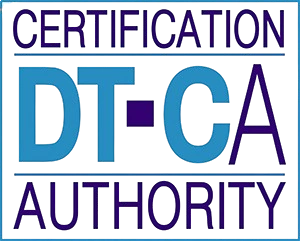Application Penetration Testing
Application penetration testing (app pentest) is one of the most critical components of modern cybersecurity. Its goal is to systematically identify, analyze, and exploit vulnerabilities in software systems before malicious actors can find them. These tests help organizations prevent data breaches, reputational damage, and financial losses caused by attacks.
We test the security of web, mobile, desktop, and hybrid applications, including APIs and source code. Our approach combines manual and automated testing following frameworks such as OWASP Top 10, OWASP MASVS, and other recognized security standards.
The result of an application penetration test is a professional technical report containing detailed findings, risk assessments, and actionable remediation recommendations.

Web Application Penetration Testing
Web application testing simulates real-world attacks targeting authentication, injection vulnerabilities (e.g., SQL Injection), server misconfigurations, data exposure, or weak session security. We also test user management, authorization logic, and data flows within the application.
Mobile Application Penetration Testing
Testing for iOS and Android focuses on data encryption, backend communication, API calls, reverse engineering, authentication/authorization flaws, and tamper protection. Based on the OWASP MASVS framework, we perform testing on both physical devices and emulators.
API Penetration Testing
APIs are a frequent target for attackers. Our API pentests focus on authentication and authorization issues, improper data handling, parameter manipulation, logic flaws, and data leaks through poorly secured endpoints.
Desktop Application Penetration Testing
Testing of thick-client applications includes analyzing server communication, sensitive data storage, startup security checks, and privilege-escalation vulnerabilities. We also examine unauthorized API calls and binary manipulation possibilities.
Source Code Audit
We verify code quality and security through static and manual analysis. The audit focuses on logic flaws, weak or inconsistent controls, unsafe input handling, insufficient logging, and risky functions. Source-code review often complements application penetration testing as a preventive measure.
Application Penetration Testing Process
The process begins with defining goals and scope. We then perform passive and active analysis of the target, identify vulnerabilities, and verify their exploitability. All findings are carefully documented and validated to minimize false positives.
Finally, we prepare a detailed technical report that includes vulnerability descriptions, severity, proof-of-concepts, and recommended remediation steps. The service also includes an executive summary and tailored consultation.
Why Choose HAXORIS?
Experience
Our experts have extensive experience in offensive security, red teaming, and application penetration testing.
Transparency
Each step is clear and transparent so you know what to expect. We maintain ongoing communication for the best results.
Collaboration
We work closely with your team, providing all necessary information and deliverables throughout the project.
Professionalism
Our work is conducted to the highest professional standards while adhering to ethical and security principles.
THEY TRUST US











FAQ
The duration depends on the size and complexity of the environment. A small web app may take 3–5 days, while a full network test can take 1–3 weeks. During the initial phase, we provide a time and effort estimate for full transparency.
The cost depends on scope, size, and complexity. A basic web application test starts in the hundreds of euros, while larger network or cloud tests cost more. After a consultation, we’ll prepare a non-binding quote.
Ideally at least once per year. You should also conduct a pentest after major changes - such as launching a new app, migrating to the cloud, or updating infrastructure. Regular testing helps maintain security and compliance.
You’ll receive a comprehensive report including an executive summary, technical findings, risk ratings, impact analysis, and clear remediation recommendations. We also offer a follow-up session to review results and answer questions.